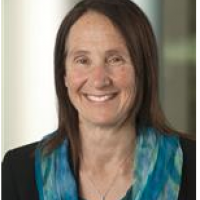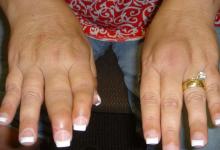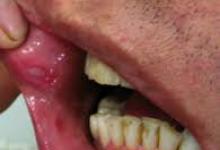Does the FRAX Assessment Tool Help? Save
Osteoporosis is a disease of bone fragility in that bone fractures when exposed to very low stresses. The strength of bone is the combination of bone mass and other qualities and both of these factors change with age.
The 1990s ushered in the use of a noninvasive central bone mass measurement, the DEXA, that very rapidly and accurately allowed clinicians to get a measurement of bone mass of the lumbar spine, hip and radius. This technology was followed closely by the introduction of T scores, or standard deviations below peak bone mass.
A T score of less than -2.5 at either the lumbar spine and hip was then adopted for the diagnosis by DEXA of osteoporosis, and it was recommended that patients with these T scores should be treated with bone active agents to reduce their risk of future fractures.
However, many subjects were having incident fractures with T scores that were above the -2.5 values. This led a number of different interest groups, including the National Osteoporosis Foundation, to issue guidelines for the treatment of individuals (mostly women) to prevent osteoporotic fractures if these individuals had a T score of the lumbar spine and hip between -1 and -2.5 with the presence of a clinical risk factor or two. This in turn led to quite a number of middle-aged and elderly women being treated to prevent an osteoporotic fracture; however, it was not really clear what the risk of a fracture was in this group of individuals. Ultimately, a high number of women and men were being treated to reduce the risk of osteoporotic fractures even though their risk was very low over a 5-10 year period.
The confusion regarding how to identify the group of individuals with a high risk of fracture despite only a low bone mass (e.g., a T score of the hip between -1 and 2.5) or some clinical risk factors led to an international effort led by the International Osteoporosis Foundation and endorsed by the World Health Organization to develop the Fracture Assessment Tool or FRAX. The overarching goal of this effort was to accurately identify patients at increased risk for fractures, and try to assess that risk as accurately as is possible, and try to increase the individual patient’s perception of that risk.
Experts in the epidemiology of osteoporotic fractures combined longitudinal cohort data that was available from a few different countries, and determined the important risk factors that were associated with fracture, and used other cohorts for validation of the variables. The result was the determination that FRAX needed to be country specific, and that bone mineral density of the hip, age of the subject and the gender are the most significant variables that make up an individual’s risk of fracture.
However, there are other variables, less important though still significant, and they include:
-body mass index
-previous fragility fracture after the age of 30
-parental history of a hip fracture
-current glucocorticoid treatment
-current smoking
-alcohol intake of 3 units or more a day
-diagnosis of rheumatoid arthritis
-other secondary causes of osteoporosis (these are not clearly defined)
Once this information is entered into a computer program, a 10-year risk of a hip fracture and a 10-year risk of a major osteoporotic fracture (hip, humerus, radius, hip) is generated. The threshold to recommend treatment to an individual with a FRAX score will depend on the country where the individual resides. In the United States, the treatment to prevent an osteoporotic at the hip is >3% and for a major osteoporotic fracture is > 20%. This information is useful for individuals who come to ask our advice regarding osteoporosis treatment, with a BMD measurement at the hip between -1 and -2.5.
While the FRAX is useful to determine if individuals with low bone mass may benefit from treatment for osteoporosis, this method also has some shortcomings.
-
The FRAX is not comprehensive; it does not cover all known risk factors for osteoporosis such as a recent fall, or biochemical markers of bone turnover that have been reported over time to identify a group of subjects that might be at risk for future bone loss and fractures.
-
There is also a lack of detail regarding some of the FRAX risk factors, e.g., while current glucocorticoid use is listed, the dose of the glucocorticoid is not ascertained and higher doses of glucocorticoids can cause more bone loss and increase fracture risk.
-
Smoking is listed as a yes or no answer but the duration and quantity of smoking is not, and this may also influence bone mass and fracture risk.
-
Also, while within a country the FRAX population validation was done, it might not be inclusive of all of the ethnic groups within that individual country and this may reduce the FRAX generalizability.
The FRAX, while a useful tool to combine BMD and risk factors with subjects that probably do not have a high risk of fracture, does not and should not replace clinical judgment. For example, a 40 year old female with a T score at the hip of -2.0 with only a risk factor of glucocorticoid use might not be recommended for treatment by a FRAX calculation. However, the dose of prednisone of 10mg a day for 2 years for a recalcitrant dermatitis, and my clinical recommendation would be to treat her glucocorticoid-induced osteoporosis, as subjects on glucocorticoids fracture at higher BMDs that subjects not treated with these medications. Lastly, the FRAX cannot be used in subjects already on treatment for osteoporosis, and currently, we do not know if there is a time interval to use the FRAX after stopping an osteoporosis medication.
In summary, the FRAX tool helps physicians and other healthcare providers identify subjects with low bone mass and combine clinical risk factors to determine their 10 year fracture risk. In general, it is very effective for subjects that do not have chronic inflammatory diseases or take medications that alter bone mass or bone strength.
I use the FRAX calculator in my practice for patients who come to me with a low bone mass and want to know if they need treatment to prevent an osteoporotic fracture. We have come to learn that age and BMD of the hip are probably the strongest risk factors for future fracture, and younger women with modestly low BMDs of the hip tend to do fine for a long time without treatment, if they are not taking glucocorticoids or being treated with aromatase inhibitors to prevent breast cancer recurrence. These are details that we obtain taking a good history.










If you are a health practitioner, you may Login/Register to comment.
Due to the nature of these comment forums, only health practitioners are allowed to comment at this time.